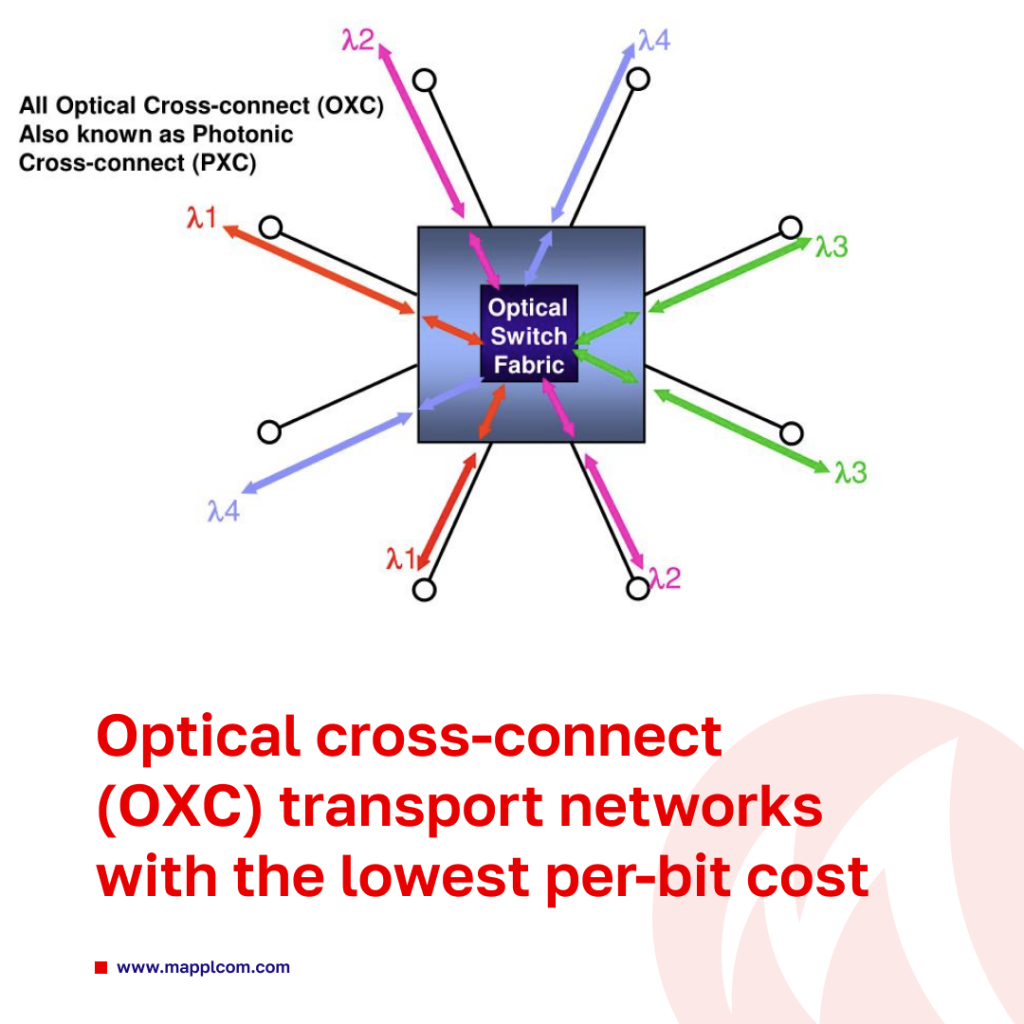Optical cross-connect (OXC) transport networks with the lowest per-bit cost

The main reasons for sharp traffic increase nowadays are, obviously, acceleration of 5G-based technologies application, growth of video and streaming services, higher customers’ requirements on content quality and longer video viewing sessions. Therefore, all the related industries have to adjust themselves to be capable of handling new challenges to both facilities and networks.
The major question here is what should players focus on while trying to implement more flexible tools. To begin with, there is, apparently, a bandwidth bottleneck due to network congestions and poor user experience. This potentially can be solved by bringing ultra-high-speed transmission technology and efficient spectrum utilization which capacity relies on relation between supply and demand, therefore, increasing the “load” of each unit on these lanes. Nevertheless, even given a higher capacity, we still face an issue of uneven distribution and different traffic burdens on some key nodes. To find a proper solution, 2-dimentional scheme should be upgraded to 3D model to meet the transmission requirements at the core nodes that will double the current level of capacity. This also brings on the idea that existing scheme of network coverage is not sufficient as latest network technologies force mobile devices to move downward to CO nodes. The number of rings connected to core nodes correlates with the increase of CO nodes, and consequently, the number of degrees at core nodes increases by 2 multiplied by number of connected rings (2*N). This triggers network to flattens then to enhance coverage.
Moreover, many services shift to cloud-based solutions and DCs grow in number, inter-DC services need lower latency, thus, moving their development toward mesh network (which increases the number of degrees by (number of network nodes – 3)). Turning back to analogies with transport systems – this is equal to providing detours when main roads are occupied. This imposes a new necessity for sufficient equipment room space high power consumption, complex fiber connections, service provisioning and O&M
The newest unique all-optical backplane technology units are capable of replacing the function of a whole sub-group in the traditional reconfigurable optical add or drop multiplexer (ROADM) solution. Consequently, each degree requires only one unit, significantly enhancing integration. This reduces footprint and power consumption by 90% and 60%, respectively, and eliminates the need for internal fiber connection, minimizing the usage of equipment room resources.
Transportation networks are an essential part of the whole operators’ infrastructure. And building a proper net with high utilization and eliminating the main bottlenecks is a key to build a stable high-capacity system to serve customers sufficiently. OXC simplifies the optical layer and enables flexible grooming, while NCE-T enables efficient and proactive O&M, helping operators build a zero-touch transport network, and further reduce the per-bit transmission cost.

